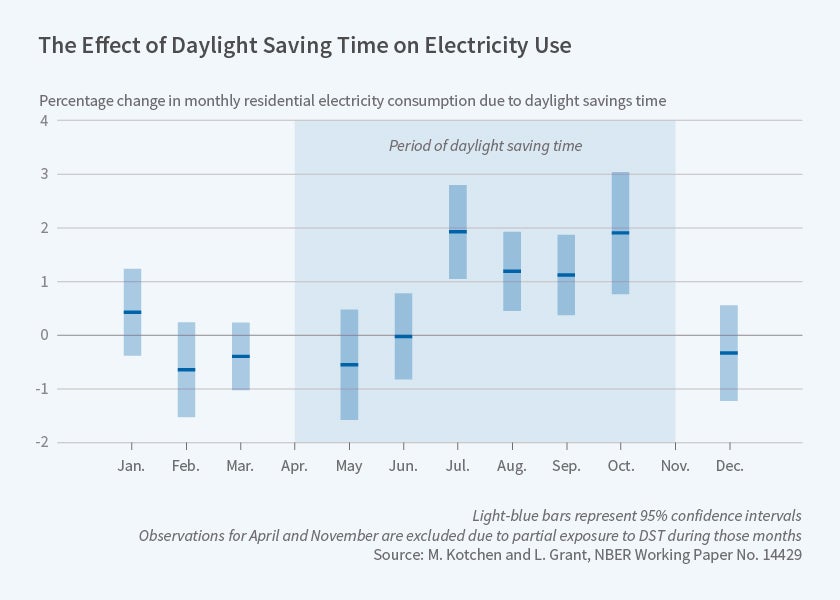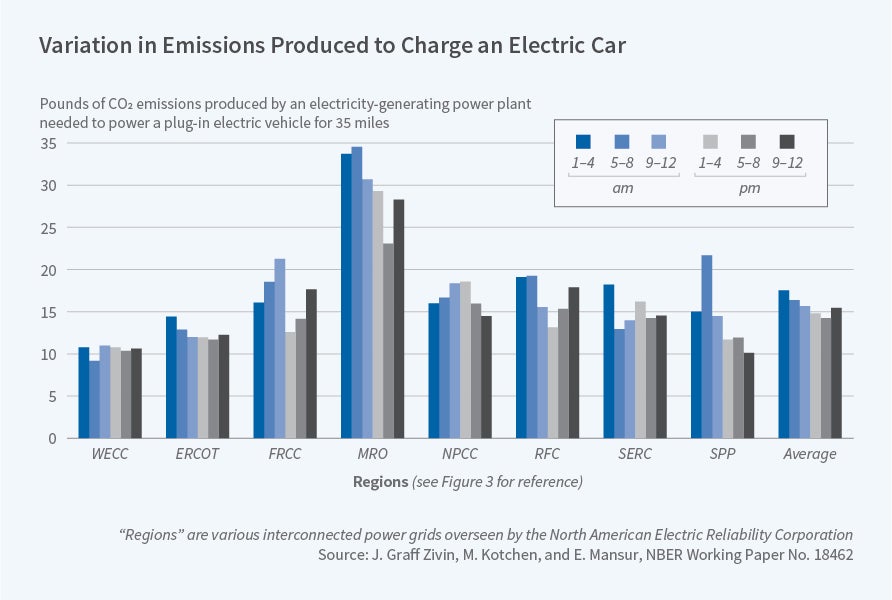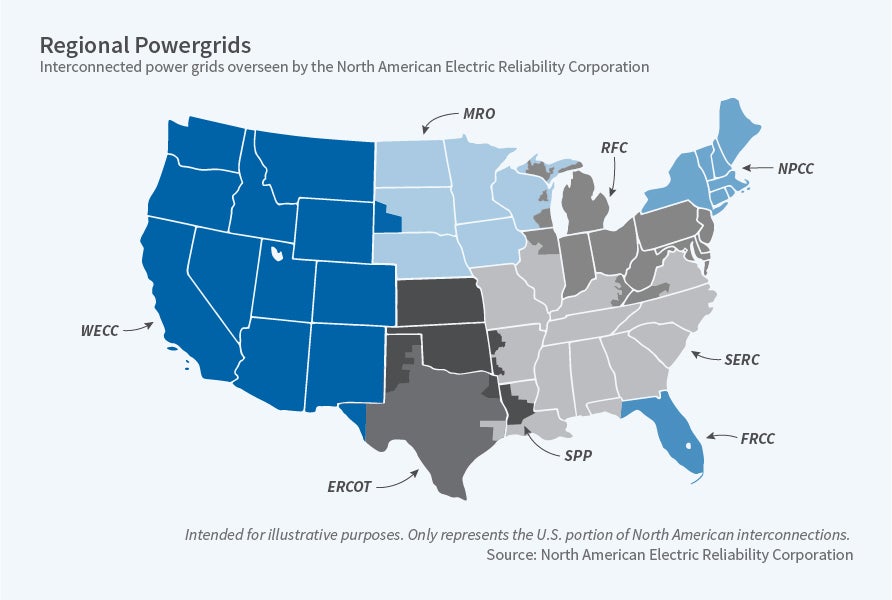Environment, Energy, and Unintended Consequences
Economists are fascinated with unintended consequences. A policy designed to accomplish a particular objective will sometimes have the opposite effect, or create new problems apart from the one it originally sought to correct. Well-intentioned individuals will sometimes make choices that are counterproductive to the very causes they seek to support. Understanding the full impact of policy interventions and individual choices is critical for the design, implementation, and improvement of more effective and efficient policies.
Much of my research over the last 15 years has focused on unintended consequences in the field of environmental and energy economics and policy. The starting point is often a simple question: Does a specific policy or choice that is driven by concern for environmental protection or energy conservation deliver on its promise, and if not, why not? Research attempting to answer this question has led to contributions to economic theory on the private provision of public goods and to empirical studies on a range of topics such as renewable energy, corporate social responsibility, daylight saving time, building codes, and electric cars.
Private Provision of Environmental Public Goods
Many individuals are concerned with the environmental impact of their consumption choices, and these concerns have driven the emergence of markets for environmentally friendly goods and services. My first theoretical contribution was to model "green goods," based on joint production of a private good and a public environmental good.1 The purchase of electricity from renewable sources of energy provides an example. While green electricity may cost more than electricity generated from fossil fuels, it produces the joint products of electricity (a private good) and lower emissions (a public good).
Does this mean green products are always beneficial for the environment? The answer turns out to depend on whether there are opportunities to provide the public good separately. It is possible, for example, that one’s purchase of green electricity crowds out other activities that reduce emissions. In such cases, introducing a green good can counterintuitively increase pollution and reduce economic welfare.
In a subsequent theoretical paper, I consider joint production that is instead based on the private provision of a public "bad."2 The setup more closely aligns with the way economists typically think about particular goods and services generating a negative externality. A novel feature of the model is the way that consumers can make donations that are motivated, in part, to offset the negative externality. In this context, I show how donations and economic welfare differ from the standard model for privately provided public goods.
One general result is that donations continue to increase, rather than decrease, as an economy grows. Moreover, an unintended consequence of this market arrangement is that the opportunity to make offsetting donations will typically stimulate demand for the externality-causing good. For example, the ability to purchase a carbon offset might help an individual justify the purchase of a less fuel-efficient car. Indeed, the theory provides a framework for understanding markets for environmental offsets, with those that promote carbon neutrality in response to climate change being an increasingly salient example.
Offsetting Goods and Bads
Does giving consumers a way to pay for their "sins of emissions" help justify an increase in polluting activities? Along with collaborators Grant Jacobsen and Mike Vandenbergh, I set out to investigate whether such behavior occurs.3 We obtained electricity billing data for residential households in Tennessee before and after a utility company introduced a voluntary green-electricity program. A key feature of the program was that households could choose to participate at different levels in support of new wind and solar generation intended to offset the emissions associated with their own electricity consumption.
We found that households participating above the minimum threshold had no change in electricity consumption, but those participating only at the minimum level — representing a "buy-in" mentality — increased their electricity consumption by 2.5 percent. We thus identified some of the first evidence on the behavioral response to undertaking a pro-environmental action.
I then became interested in knowing whether a similar phenomenon was taking place within corporations. The existing literature on corporate social responsibility (CSR) tends to focus on the relationship between CSR and financial performance. I was curious about a potential intervening mechanism, whereby companies might pursue CSR strategies to offset corporate social irresponsibility (CSI).
Jon Jungbien Moon and I disaggregated one of the widely used indices for CSR into separate measures of CSR and CSI across seven dimensions, including corporate governance, community relations, human rights, and the environment.4 Analyzing data on more than 3,000 publicly traded companies over 14 years, we found that CSI is a significant predictor of CSR, both overall and within specific dimensions. For example, when a company is responsible for an environmental accident, it compensates by undertaking pro-environmental actions. When it comes to corporate governance, however, the findings are more nuanced: After an event that reflects poorly on corporate governance, companies tend to compensate in nearly all dimensions of CSR except for reforming governance itself.
Saving Energy and Reducing Pollution — Or Not
Many people are surprised to hear that daylight saving time (DST) is one of the more longstanding and universally applied energy policies. Implemented as a conservation measure in both world wars, DST has a long and fascinating history. Indeed, Benjamin Franklin produced an early economic analysis of DST, showing how much tallow and candles could be saved if clocks were changed to encourage early rising during long summer days, when people could take greater advantage of natural daylight. The same argument is still used today to justify DST as energy policy in the United States, yet surprisingly little analysis on the subject has occurred since Franklin's day.
Taking advantage of a natural experiment that occurred in Indiana, Laura Grant and I estimated the effect of DST on electricity consumption.5 In 2006, the state switched to DST while simultaneously shifting some of its counties to a different time zone. The combination of these two policies provided treatment and control groups that allowed us to compare differences in residential electricity consumption before and after the policy change. We found that — contrary to the policy's intent — DST increased electricity consumption [Figure 1]. While Franklin's conjecture about the demand for lighting holds up, modern-day demand for heating and cooling differs across hours of the day, and the shift to DST increased both.
Building codes are another ubiquitous form of energy policy. The regulation of building practices first focused on energy for purposes of national security in the wake of the Arab oil embargo in the 1970s. Today, building energy codes across the United States and other countries are motivated by concerns about energy efficiency and climate change. Until recently, however, engineering simulations provided the only evidence on their effectiveness. This led Jacobsen and me to search for an opportunity to provide an evaluation that accounted for actual construction practices and the behavior of household residents.
We found one in Florida, where the state increased the stringency of its building energy code in 2002. We obtained a unique dataset that included detailed information on the characteristics of residential dwellings and monthly billing data for electricity and natural gas. This enabled us to compare energy consumption of observationally similar residences built just before and after the building code change. We found significant decreases in both electricity and natural gas consumption, and estimated the private payback period to be approximately six years.6
Yet subsequent research by Arik Levinson, studying data from California, raised questions about whether the energy saving effects would endure over the long run.7 This spurred a reevaluation of our Florida findings over a longer time period when additional data were available. The results indicated that after five or six years, electricity savings were no longer evident, while the natural gas savings persisted.8 Questions about the underlying mechanism and generalizability of these short-run and long-run effects remain, but the number of papers appearing on the subject suggests that we will soon learn more about the effectiveness and efficiency of building energy codes.
We are also beginning to learn more about the potential of electric cars to lower demand for energy and reduce pollution. Generous subsidies at the state and federal level, along with the extraordinary market valuation of Tesla, signal high confidence in the future benefits and scale of the electric car market. But often missing from future visions is that charging electric cars also requires energy, and their environmental impacts depend on a comparison of emissions at tailpipes versus power plants.
Joshua Graff-Zivin, Erin Mansur, and I developed a method for estimating marginal emissions of electricity generation at different locations and times of day across the United States.9 While previous studies either relied on simulation estimates or average — rather than marginal — emissions, our approach is based on hourly load and emissions data across different interconnections of the electricity grid [Figures 2 and 3].
The results can be used to estimate the effect on `CO_2` emissions from any electricity-shifting policy; we focused on increased demand to charge electric cars. We found considerable differences in the emissions based on geographic location and hours of the day. The heterogeneity is driven by the fact that electricity is generated in different ways, mostly from coal or natural gas, at different locations and at peak versus off-peak times of day. Notably, we found that in many Upper Midwestern states, an electric car generates more `CO_2` emissions than the average economy car. The research showed that the future environmental promise of electric cars depends critically on how electricity is generated on the grid. Subsequent research has also shown the importance of considering the health effects of local pollution.10
Looking Ahead
To conclude, I must admit that the pattern in my research of identifying and estimating unintended consequences is itself an unintended consequence, the result of opportunistically pursuing research questions without preconceived notions. While I think that uncovering unexpected and sometimes counterintuitive findings is important, the growing set of environmental and energy challenges also requires economic research with a directly constructive agenda. Fortunately, many in the field are doing precisely this. A few recent and selected examples of my own efforts with such a goal include using revealed preferences to test among models for charitable giving to environmental causes,11 drawing insights about national and international climate policy from a public goods framework,12 and developing new ways to think about long-term and intergenerational social discount rates.13
Endnotes
M. J. Kotchen, "Green Markets and Private Provision of Public Goods," Journal of Political Economy, 114, 2006. pp. 816–34.
M. J. Kotchen, "Voluntary Provision of Public Goods for Bads: A Theory of Environmental Offsets," NBER Working Paper 13643, November 2007, and The Economic Journal, 119(537), 2009, pp. 883–99.
G. D. Jacobsen, M. J. Kotchen, and M. P. Vandenbergh, "The Behavioral Response to Voluntary Provision of an Environmental Public Good: Evidence from Residential Electricity Demand," NBER Working Paper 16608, December 2010, and European Economic Review, 56(5), 2012, pp. 946–60.
M. J. Kotchen and J. J. Moon, "Corporate Social Responsibility for Irresponsibility," NBER Working Paper 17254, July 2011, and The B.E. Journal of Economic Analysis & Policy (Contributions), 12(1), 2012.
M. J. Kotchen and L. E. Grant, "Does Daylight Saving Time Save Energy? Evidence from a Natural Experiment in Indiana," NBER Working Paper 14429, October 2008, and The Review of Economics and Statistics, 93(4), 2011, pp. 1172–85.
G. D. Jacobsen and M. J. Kotchen, "Are Building Codes Effective at Saving Energy? Evidence from Residential Billing Data in Florida," NBER Working Paper 16194, July 2010, and The Review of Economics and Statistics, 95(1), 2013, pp. 34–49.
A. Levinson, "How Much Energy Do Building Energy Codes Really Save? Evidence from California," NBER Working Paper 20797, December 2014, and American Economic Review, 106(10), 2016, pp. 2867–94.
M. J. Kotchen, "Do Building Energy Codes Have a Lasting Effect on Energy Consumption? New Evidence From Residential Billing Data in Florida," NBER Working Paper 21398, July 2015, and published as "Longer-Run Evidence on Whether Building Energy Codes Reduce Residential Energy Consumption," Journal of the Association of Environmental and Resource Economists, 4(1), 2017, pp. 135–53.
J. Graff-Zivin, M. J. Kotchen, and E. T. Mansur, "Spatial and Temporal Heterogeneity of Marginal Emissions: Implications for Electric Cars and Other Electricity-Shifting Policies," NBER Working Paper 18462, October 2012, and Journal of Economic Behavior & Organization, 107, 2014, pp. 248–68.
S. P. Holland, E. T. Mansur, N. Z. Muller, and A. J. Yates, "Environmental Benefits from Driving Electric Vehicles?" NBER Working Paper 21291, June 2015, and published as "Are There Economic Benefits From Driving Electric Vehicles? The Importance of Local Factors," American Economic Review, 106(12), 2016, pp. 3700–29.
R. Deb, R. S. Gazzale, and M. J. Kotchen, "Testing Motives for Charitable Giving: A Revealed-Preference Methodology with Experimental Evidence," NBER Working Paper 18029, May 2012, and Journal of Public Economics, 120, 2014, pp. 181–92.
M. J. Kotchen, "Which Social Cost of Carbon? A Theoretical Perspective," NBER Working Paper 22246, May 2016, and Journal of the Association of Environmental and Resource Economists, 5(3), 2018, pp. 673–94.
E. P. Fenichel, M. J. Kotchen, and E. T. Addicott, "Even the Representative Agent Must Die: Using Demographics to Inform Long-Term Social Discount Rates," NBER Working Paper 23591, July 2017.





